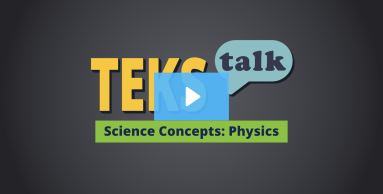
Knowledge and Skills Statement
Research
Goodhew, Lisa M., Amy D. Robertson, Paula R. L. Heron, and Rachel E. Scherr. "Student Conceptual Resources for Understanding Mechanical Wave Propagation." Physical Review Physics Education Research 15, no. 2 (2019): 020127. https://doi.org/10.1103/PhysRevPhysEducRes.15.020127
Summary: Our work contributes new knowledge of student ideas about mechanical wave propagation from a resources perspective, framing student thinking in terms of context-sensitive pieces of knowledge that are continuous with canonical physics concepts. The intent of this work is to inform instruction on mechanical waves by identifying and illustrating some of the conceptual resources that instructors might expect their students to use. Our analysis reveals three common conceptual resources: (i) properties of the medium either impede or facilitate the motion of the pulse, (ii) the speed or duration of transverse motion affects pulse speed, and (iii) the speed of the pulse is affected by its kinetic energy.
Research
Xie, Li, Qiaoyi Liu, Hui Lu, Qingyong Wang, Jing Han, XiuMei Feng, and Lei Bao. "Student Knowledge Integration in Learning Mechanical Wave Propagation." Physical Review Physics Education Research 17, no. 2 (2021): 020122. https://doi.org/10.1103/PhysRevPhysEducRes.17.020122
Summary: Students often have widespread difficulties and misconceptions about wave propagation. This research develops and applies a conceptual framework model to examine students’ understanding of mechanical wave propagation from the knowledge integration perspective. The effectiveness of instruction was evaluated. Pre-post testing results suggested that the new instruction significantly improved students’ performance on questions that require an integrated knowledge structure, indicating advancement in knowledge integration and deep understanding.
